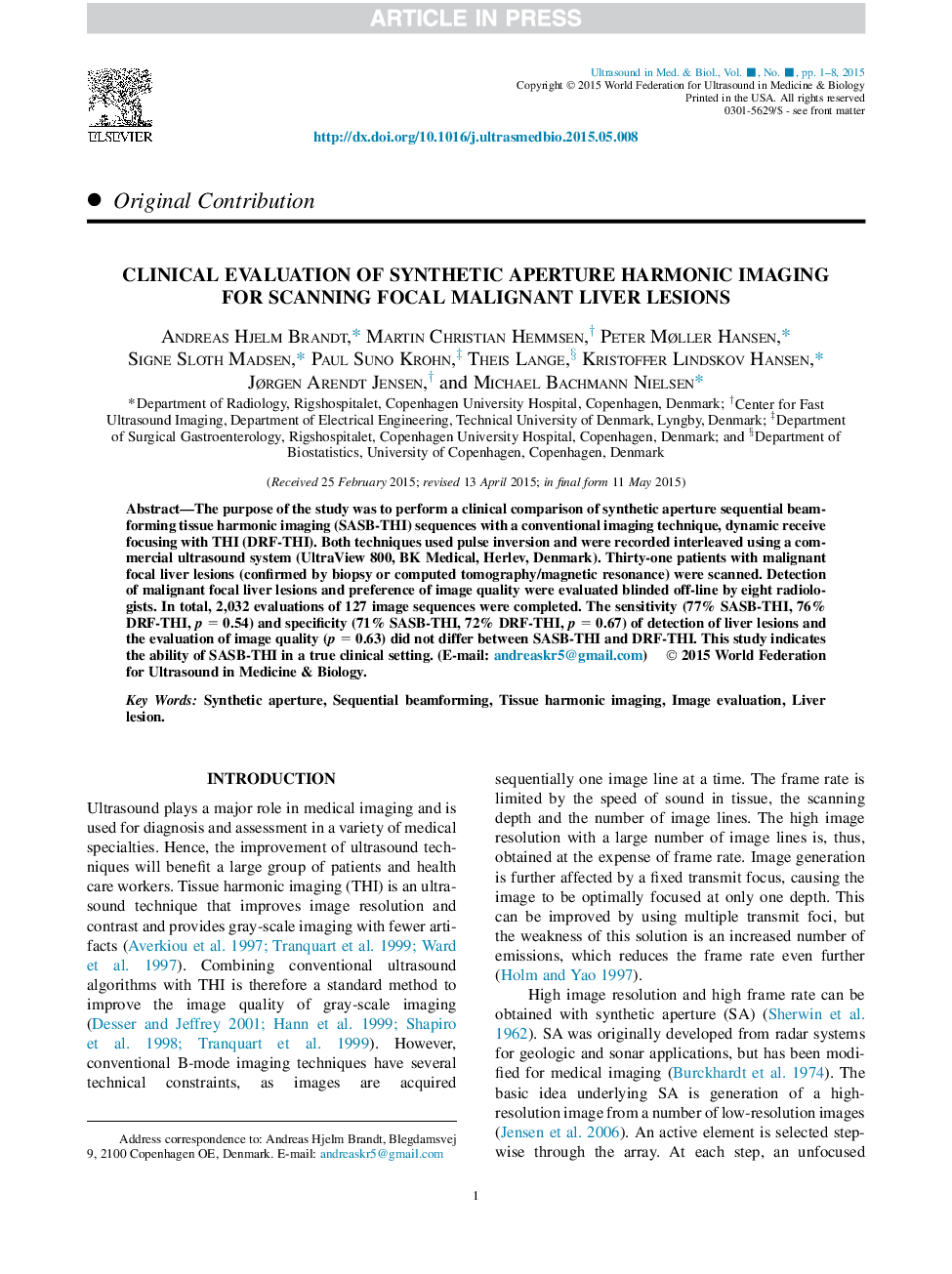| Article ID | Journal | Published Year | Pages | File Type |
|---|---|---|---|---|
| 1760278 | Ultrasound in Medicine & Biology | 2015 | 8 Pages |
Abstract
The purpose of the study was to perform a clinical comparison of synthetic aperture sequential beamforming tissue harmonic imaging (SASB-THI) sequences with a conventional imaging technique, dynamic receive focusing with THI (DRF-THI). Both techniques used pulse inversion and were recorded interleaved using a commercial ultrasound system (UltraView 800, BK Medical, Herlev, Denmark). Thirty-one patients with malignant focal liver lesions (confirmed by biopsy or computed tomography/magnetic resonance) were scanned. Detection of malignant focal liver lesions and preference of image quality were evaluated blinded off-line by eight radiologists. In total, 2,032 evaluations of 127 image sequences were completed. The sensitivity (77% SASB-THI, 76% DRF-THI, p = 0.54) and specificity (71% SASB-THI, 72% DRF-THI, p = 0.67) of detection of liver lesions and the evaluation of image quality (p = 0.63) did not differ between SASB-THI and DRF-THI. This study indicates the ability of SASB-THI in a true clinical setting.
Related Topics
Physical Sciences and Engineering
Physics and Astronomy
Acoustics and Ultrasonics
Authors
Andreas Hjelm Brandt, Martin Christian Hemmsen, Peter Møller Hansen, Signe Sloth Madsen, Paul Suno Krohn, Theis Lange, Kristoffer Lindskov Hansen, Jørgen Arendt Jensen, Michael Bachmann Nielsen,
